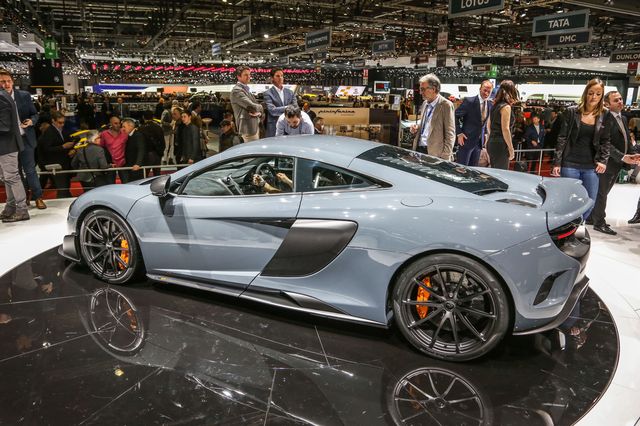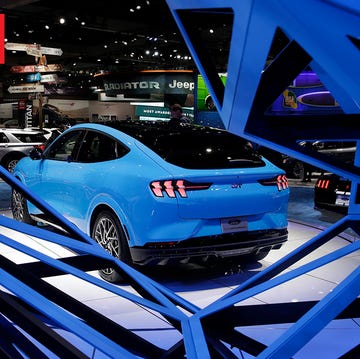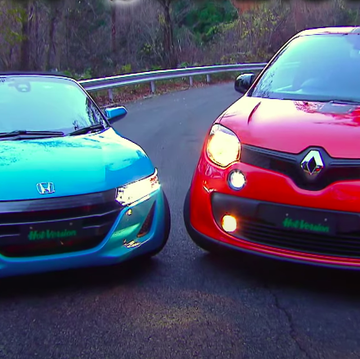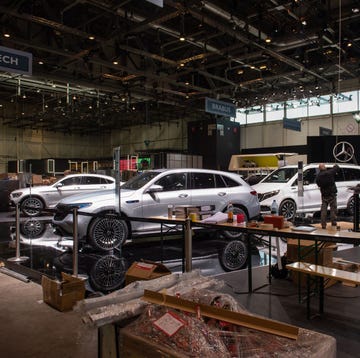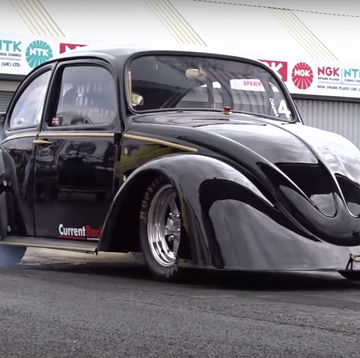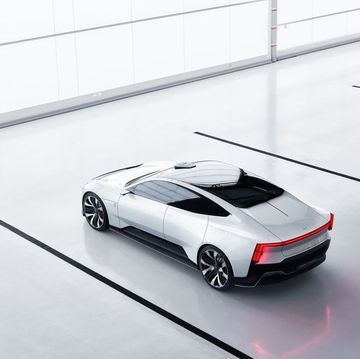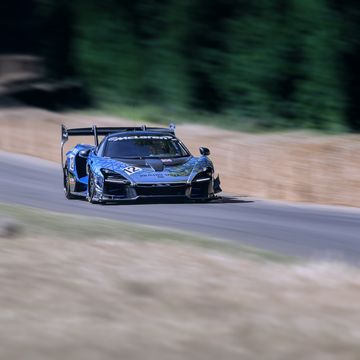Measuring a miniscule 1.34 inches longer than the regular 650S, judged purely on its plume, McLaren's 'Longtail' 675LT looks like a classic case of over-promising and under-delivering. But it's not about the tail, says McLaren of its $350,000 answer to the mighty Ferrari 458 Speciale.
Sure, it takes its name from Macca's late 1990s F1 racer, whose bodywork stretched a whopping 25 inches longer than the regular F1's, but both cars feature significant other improvements. In McLaren's eyes, the Longtail badge denotes a clear focus on outright performance, weight reduction and driver involvement. As a result, 30 percent of the 675LT is new. Executive Director of Product development, Mark Vinnels, is our guide:
About that tail
Stretching barely an inch beyond the standard 650, the LT features a Leno-esque jutting chin, but its party piece is a new rear air brake that's 50-percent bigger. When resting, that brake forms a bridge spoiler that, together with a rear diffuser, new side skirts and a front fins, improves downforce by 40 percent.
Shredded beef
"It's not easy to strip significant weight out of a car that's already the lightest in its class, but we managed to cut 220 lb from the 650S," says Vinnels. "From the B-pillar backwards, pretty much everything is new. The bodywork is new and made from carbon fiber, the exhaust is titanium and the forged wheels are the lightest wheels we've ever made. They're actually 1.76 lbs lighter than the P1's wheels."
The glass is thinner, or in the case of the engine cover, swapped out for polycarbonate. The HVAC controls are gone from the doors and there are lightweight racing buckets (which will come to the US), and a titanium roll hoop behind them (which is part of the optional European Club sport pack, and won't). McLaren claims a dry curb weight of 2712lb, which translates to around 2930lb with fluids, and purportedly the best power to weight ratio in the class
Lighter engine, faster revving
"50 percent of the engine hardware is new," says Vinnels, "including the lightweight turbochargers and redesigned camshafts. The engine is lighter, which reduces the overall weight of the car, but it also reduces the engine's reciprocating mass. The maximum rate of rev change is improved by one third."
Total power is up from 641 bhp (650 ps) to a devilish-sounding 666 bhp (675 ps), and torque from 500 lb ft to 516 lb ft, though interestingly both are produced slightly lower than in the 650.
The zero-to-62 mph time falls by 0.1 sec to 2.9 sec, but check out the 0-200 km/h (124 mph) times— the real yardstick for modern sports-car performance: the 675 gets there in 7.9 sec, still 1 sec off the P1, but 0.5 sec faster than the 650S, and 1.2 sec ahead of the Ferrari 458 Speciale.
Getting a shift on
The seven-speed dual-clutch transmission now shifts twice as quickly with no new hardware. "In the past we cut the fueling during shifts, because you don't want a load of unburnt fuel being fired into the catalytic converters. But with careful calibration we've been able to keep the fueling on, and just interrupt the ignition instead, halving the shift times."
Lower, wider, hungrier
The LT sits 0.79 in lower than standard on sticky Pirelli Trofeo tires that are mounted further outboard by the same distance.
"That wider track improves handling, but we also needed to widen the rear arches to make room for a 2.5 degree rotation in the side radiators, which was necessary to improve the engine cooling," explains Vinnels, adding that those scoops in the rocker panels are functional too. "We've also fitted a new steering rack that's quicker by 10 per cent, making it quicker even than the P1's."
You can use it on the road without needing ear protection
That's a direct poke at the 458 Speciale, for those keeping score. "You feel much more connected in the 675LT than in the 650S, there's more noise, more vibration, more engagement, but this car is still very much a one you can drive to the track—not just on it. Obviously its operating range has shifted, but its still capable of riding comfortably on the motorway."
Does that mean there's room for another more extreme 650-based car above the LT? Not according to Vinnels, who reckons the track-only 650S Sprint and 650 GT3 fulfill that role.
It'll make a 650S look like common (even if you don't live in Dubai)
The 650S isn't exactly an everyday sight; McLaren built fewer than 1600 last year, making it rarer than Ferrari's 458. But total production of 675LTs will be capped at 500 units, each costing $350,000, or $85,000 more than the standard car.
It's coupe only for now, says McLaren, but a Spider hasn't been ruled out. Colossal personal wealth has a habit of getting people to persuade carmakers to do things that are just plain wrong.
